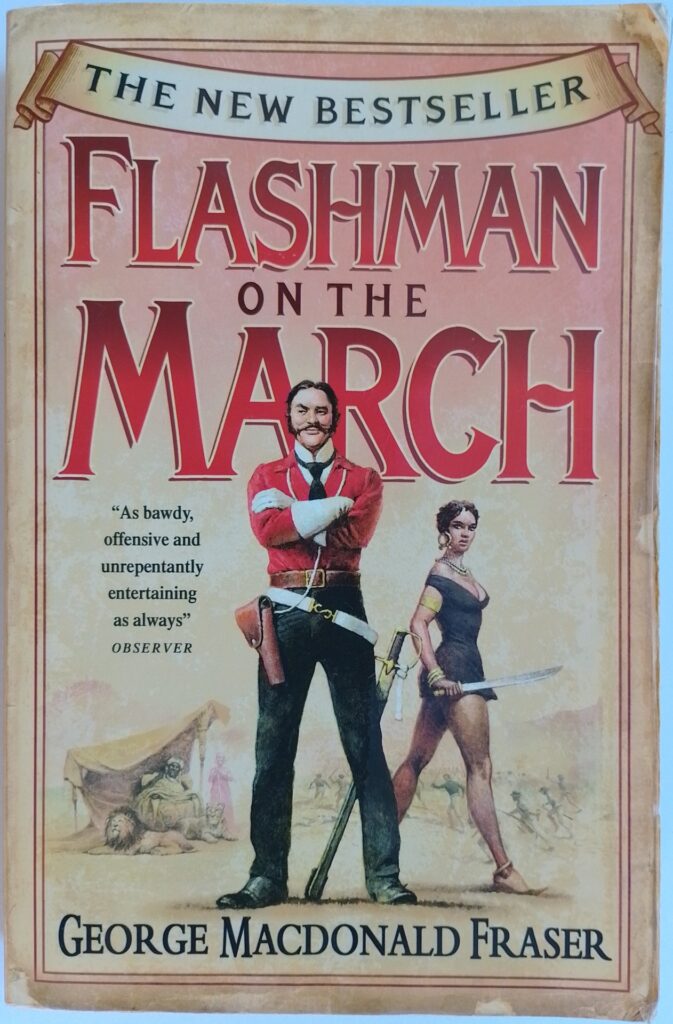First published 2005. Harper Collins, paperback, 2005, pp 317, c.120,000 words.
This is the last Flashman book that MacDonald Fraser wrote, although not quite the last in terms of Flashman’s chronology: The second part of Flashman and the Redskins and Flashman and the Tiger record events a little later than this, the story of Flashman’s pivotal involvement in the Abyssinian War of 1868. The formular is familiar even if the historic context is not: Flashman, as a consequence of an act of debauchery, has to make a quick exit from Trieste and is offered a job escorting a consignment of bullion that the British need to fund their campaign to free prisoners of the Abyssinian emperor, the mad Theodor.
Flashman’s efforts to make a rapid departure are thwarted when General Napier, in charge of the British forces, recognising Flashman’s talents (some as they really are and some as they appear to be), offers him an assignment which Flashman cannot refuse or his whole carefully constructed false persona as a hero might be unmasked. What follows is the usual tale of encounters with beautiful women and vicious killers; sometimes both in one, hairsbreadth escapes, luxury and depravation, physical hardship and lechery.
I have learned more about 19th century history from reading MacDonald Fraser’s Flashman than I ever learned in school. The author has clearly done his research, judging by the comprehensive notes from other (real) sources that corroborate Flashman’s account of proceedings.
Interestingly, Flashman is set up as a thoroughly bad lot who came by his fame and honours dishonestly, but we always end up rooting for him. He is only really bad when he is in such dire straits that the only way out is to toss his girlfriend of the moment to the wolves. He is really a perfectly marvellous creation: the upright, heroic, Victorian gentleman, who hides his sins so effectively. He is appalled by the carnage of the 19th century wars that he very reluctantly or accidentally participates in. He very rarely fires a shot or wields a sword himself.
The writing is excellent: it is a very accessible read. There are some 19th century words and phrases used but the meanings are always clear from the context. A few items of terminology from the Indian army are translated in footnotes. When reading it, I kept two book markers: one to mark my place in the text and one in the extensive notes at the end. The notes usually explain some almost unbelievable event or character’s action, giving corroborating sources.
I’m sorry that this is the last Flashman: they have been such a pleasure to read. If you haven’t come across him before, you have a treat in store. They can be read in any order but perhaps it would be best to start with the first, Flashman, to get the set up. The rest can be enjoyable be read in any order.
© William John Graham, June 2022

